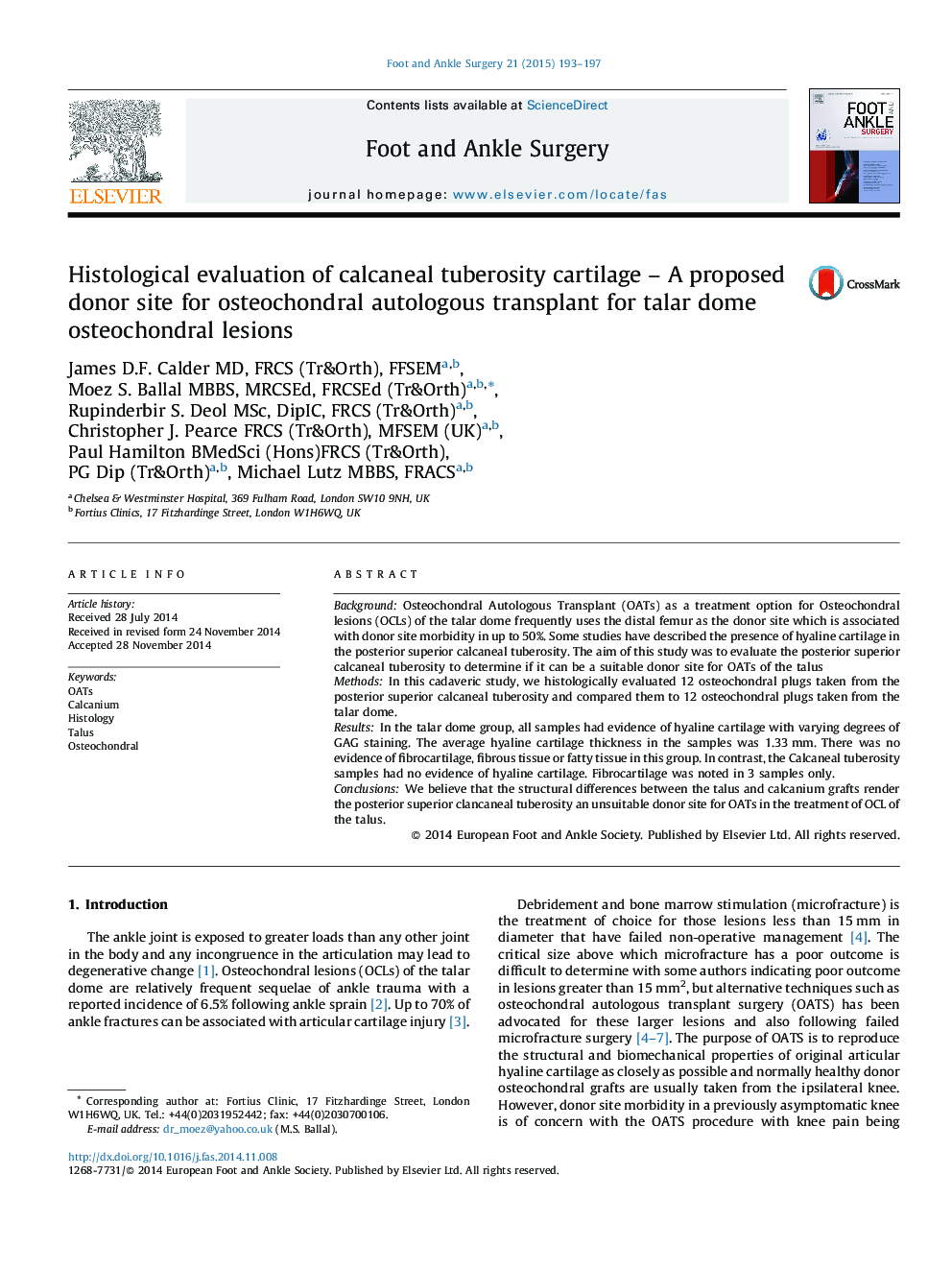| Article ID | Journal | Published Year | Pages | File Type |
|---|---|---|---|---|
| 4054525 | Foot and Ankle Surgery | 2015 | 5 Pages |
•Histological evaluation of 12 calcaneal tuberosity samples and talar dome samples.•Type of cartilage and thickness were evaluated in both and compared.•Talar dome samples show hyaline cartilage.•Calcaneal tuberosity shows no evidence of hyaline cartilage with three samples showing fibro-cartilage.•Calcaneal tuberosity is not a suitable donor site for OATs.
BackgroundOsteochondral Autologous Transplant (OATs) as a treatment option for Osteochondral lesions (OCLs) of the talar dome frequently uses the distal femur as the donor site which is associated with donor site morbidity in up to 50%. Some studies have described the presence of hyaline cartilage in the posterior superior calcaneal tuberosity. The aim of this study was to evaluate the posterior superior calcaneal tuberosity to determine if it can be a suitable donor site for OATs of the talusMethodsIn this cadaveric study, we histologically evaluated 12 osteochondral plugs taken from the posterior superior calcaneal tuberosity and compared them to 12 osteochondral plugs taken from the talar dome.ResultsIn the talar dome group, all samples had evidence of hyaline cartilage with varying degrees of GAG staining. The average hyaline cartilage thickness in the samples was 1.33 mm. There was no evidence of fibrocartilage, fibrous tissue or fatty tissue in this group. In contrast, the Calcaneal tuberosity samples had no evidence of hyaline cartilage. Fibrocartilage was noted in 3 samples only.ConclusionsWe believe that the structural differences between the talus and calcanium grafts render the posterior superior clancaneal tuberosity an unsuitable donor site for OATs in the treatment of OCL of the talus.
